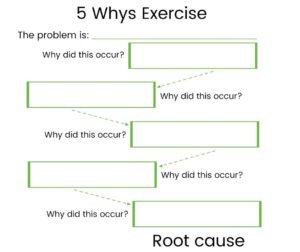5 Ways to Break Down the Data Silos that Hurt Customer Experience

Do you have a data silo problem?
- Do customers complain of having to explain everything about their business to sales, and then to customer success, and then again to customer support?
- Is customer support hearing about the same issues, over and over again, that aren’t being addressed by product?
Those are just two of the most frequent symptoms of data silos. Here are some more, reported to us by our friends at Segment.
- Inability to answer complex questions about your customer journey.
- Inability to quantify the impact of a given campaign against down-funnel, often offline conversations (like Salesforce lead status updates).
- Inability to affect targeting criteria in a given channel based on interactions that occurred in another (ie. you’re spamming users across channels when they’ve already converted or signaled their preferences in another.
What do all of these silo symptoms have in common? They all damage customer experience, and they all result from data not being shared between teams and departments.
Three main causes of data silos
Data silos are isolated islands where information sits, visible to just one or a few people. Usually, the cause of data silos isn’t some greedy information hog, unwilling to let anyone see his or her hoard of numbers. It’s nothing so Dickensian. Here are the main reasons they exist.
- Structural
Businesses that have been around through multiple owners, leaders and ideologies typically have incompatible systems in place from various eras and incarnations. Older software or apps that haven’t been updated or replaced probably don’t play well with others. Whereas newer data collection and analysis programs have built-in capacities to share information with other apps, older systems don’t. Or, they don’t do it automatically. If no one is tasked with disseminating the information, it doesn’t get shared.
- Social
Maybe teams aren’t rewarded for sharing, or required to share information. Or, maybe there is a data hoarding person or group who keep data to themselves to maintain a sense of power and control. But usually, it’s a case of ‘this is the way we’ve always done it’ resistance to change. Having a ‘silo mentality’ in your business makes it difficult or impossible to quickly spot opportunities and take advantage of them, because when information isn’t shared, you can’t make fast, informed, data-driven decisions.
- Vendor lock-in
Maybe it’s not you, it’s them. The software vendors. Yes, even software-as-a-service applications can effectively ‘trap’ businesses within their platforms by requiring heavy investments in special training, or they may lack native integrations or an open API. In either case, they make it difficult to switch information over to other apps.
Breaking down these data silos requires a lot of effort and commitment. Structural causes require an overhaul of all or most of your existing systems; social causes may take a company-wide initiative to improve company culture; and vendor lock-in-related causes are, by nature, tricky to remedy.
So before we get into how to break down data silos, let’s look at why it’s worth all of the time, effort, and investment.
What you stand to gain by breaking silos down
One of the biggest threats data silos pose to companies is blocking customer success. Customer success depends on everyone in the company being aligned behind the same data-informed vision of the target customer – their needs, wants, challenges and desired outcomes.
But that alignment depends entirely on sharing information across the entire organization, not just once, but continuously, to facilitate collaboration between sales, marketing, customer success and customer service (at minimum). When customer-facing departments run entirely separately from each other, it’s the customers who pay the price.
When customers run into trouble, they have to repeat themselves as they’re bounced around from agent to agent.
If a loyal customer was unhappy with the last order, s/he will feel pestered and aggravated when a clueless sales rep tries to upsell them.
Of course, it’s not only customers who suffer – nobody benefits from data silos! A 2016 brief from Forrester observed the high rates of “misaligned performance metrics, lack of clarity around lead scoring (and definitions)” and other misunderstandings between marketing and sales that leaves “sales ops in the middle to make sense of the chaos.”
Another Forrester statistic is “less than 1% of leads in B2B ever become customers,” which means businesses are wasting money on marketing that doesn’t work, salespeople are wasting time on leads that will never convert, and – when you have data silos, marketers might not even know what they’re doing wrong.
With some types of data, sharing is even more important because so many departments stand to benefit from having easy access to it. Voice-of-customer data, for example, is a must-have for marketing (for testimonials, ad/sales page/email copy, content ideas), sales (for upsells), and product (to optimize features).
The bottom line is: Breaking down data silos is an absolute requirement of creating the customer-centric culture customers want and companies need.
How to break those silos
“A customer-centric culture should be the North Star and guiding principle for tearing down the silos [between marketing, sales, and customer service]… Before joining Salesforce, I spent 12 years running global engineering and also serving as a [chief marketing officer]. Silo busting was how I spent most of my time. I realized that I had to try to align different areas of the business, and the only way to do that was to silo-bust.”
– Vala Afshar, chief digital strategist at Salesforce
First, diagnose what is causing your silo problem using the 5 Whys cause and effect analysis.
 The idea is to find the root cause of the surface problem. The surface problem, for example, might be that marketing isn’t qualifying leads before passing them on to sales. The reason for that might be that marketing isn’t sure what the success indicators are for leads who convert. The reason for that might be because that data is stopped up – it’s kept by sales.
The idea is to find the root cause of the surface problem. The surface problem, for example, might be that marketing isn’t qualifying leads before passing them on to sales. The reason for that might be that marketing isn’t sure what the success indicators are for leads who convert. The reason for that might be because that data is stopped up – it’s kept by sales.
We’re already at the third ‘why’ question and we’ve just gotten to the middle problem of the data silo.
The answers to ‘why’ #4 and ‘why’ #5 will reveal the core cause that’s creating the silo in the first place.
Why use the 5 Whys? Because you might find that a data silo isn’t the root of the problem, or that the reason for the silo isn’t what you think it is. There may, in fact, be an underlying issue that runs deeper than investing in a new data gathering and analysis program can fix.
Second, get management buy-in.
Once you’re armed with the problems the data silo creates, as well as a thorough understanding of the underlying issues contributing to those problems, take your findings to management. You’ll need total buy-in from the top to address those deeper issues and find a data-busting solution that works perfectly for your company.
To get that buy-in, you’ve got to present a strong case that freely shared information will help each individual department, and the entire organization, essentially offering them a unified vision. In addition to bringing up current problems free-flowing information can fix, also consider how it can aid your company’s long-term goals and department objectives.
Third, align behind your North Star (the customer)
It’s not going to be easy to change long-standing habits in your organization, so to do it successfully, you’ve got to have whole-company alignment behind the real purpose of your proposed changes: The customer.
Your customers will tell you what impact your changes are really having. But, you need a metric to track, so everyone can see that breaking down silos (and all the work and training that go into it) are worth the effort.
We call this a “North Star metric,” like Net Promoter Score (NPS). When you see NPS scores rise, proving that customers are indeed happier (so happy they’re willing to recommend you to a friend or colleague), it’s proof positive that what you’re doing makes a difference.
Fourth, find the right tools.
Better tools lead to better collaboration, and what you’ll want to look for are data gathering and analysis tools that integrate with your CRM software (which will also solve the vendor lock-in problem, if that’s the source of your silo).
This is going to be your “single source of truth” database. Salesforce is a perfect example.
It’s key to make sure that data is shared with various functional systems of record so everyone has what they need at their fingertips. At Wootric, for example, we sync customer/prospect data from our product, Intercom (for Success) and HubSpot (for Marketing) to Salesforce – and from the Wootric survey platform, we integrate with Slack, Intercom, Salesforce, and HubSpot.
For us, this means:
- The way we put NPS into Intercom so that if a customer reaches out about a conversation, someone can see the entire history of that customer.
- You could have a different conversation with a promoter than someone who ‘dinged you’ the last time – having that context shifts the conversation.
Segment Product Manager Chris Sperandio says customers come to his company for better alignment through data.
The key is the desire to align all of their departments around a shared customer context. The way they achieve this is ensuring each department’s tools are running on a common data set. This way, they can run more cohesive campaigns and they can operationalize their insights and predictions.
Fifth: Invest in cross-functional training – together.
Once you have diagnosed your core problems, obtained management buy-in, and choose a metric that measures progress, and have the right tools – it’s time to bring everyone together for training.
Not only will everyone need training on how to use the new tools, they’ll also need training on how they can best work together to create better customer experiences through sharing information. Silo-busting is a multi-team effort, but when teams have traditionally been kept separate and sovereign, it can be a challenge to build bridges and relationships.
Try hosting a meeting with everyone to establish a shared understanding of each team’s goals, challenges and pain points.
Then, have everyone get together to find areas where insights and abilities from one person can help another person with their challenges and goals.
Finally, have everyone fill out a “communication builder” questionnaire that asks:
- Basic contact information: phone/email/Slack etc.
- What is their job title/function?
- When and how do they prefer being contacted (ie. by phone before noon, or via email – but not available on weekends for immediate response).
This step sets up co-workers for success by setting expectations and letting everyone receive requests and information in the way that works best for them.
Alternately, you might consider creating a cross-functional “tiger team” who ‘owns’ the progress of the North Star metric (like NPS) and has a C-suite sponsor who helps them get things done.
Collaborative training is a good start, but will need to be nurtured over time as the human tendency is to fall back into familiar behavior patterns. To help break those patterns, you might even consider physically moving people so employees from different teams work next to each other, building relationships.
Measure and improve customer experience at scale.
Get auto-tagging with InMoment customer feedback software. Sign up for a free trial.





